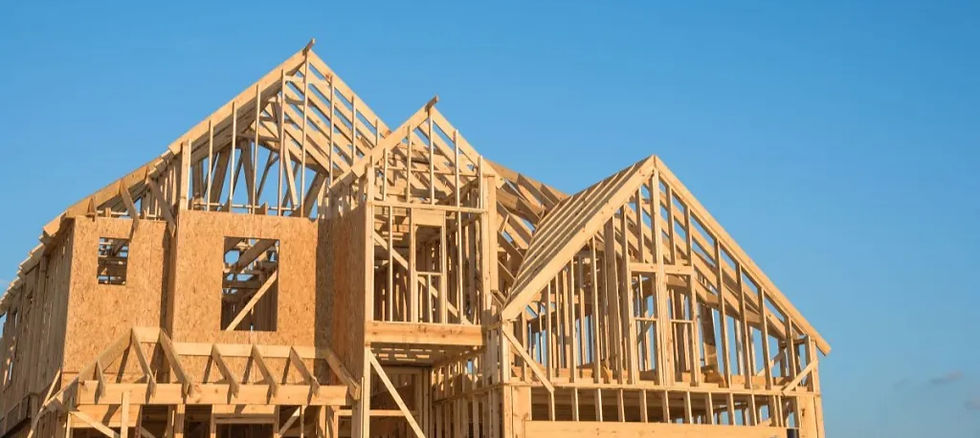Fort Worth Suburbs vs. Urban Living: Construction & Remodeling Considerations for Each
- Valor Building Solutions

- Aug 20
- 4 min read
Fort Worth is growing, and with that growth comes a key question for homeowners: is urban or suburban living right for me? The answer heavily influences your construction and remodeling projects. From building codes and permit processes to architectural styles and land availability, the considerations for a home in a historic urban neighborhood are drastically different from those in a new suburban development.
Urban Living: Character and Complexity

Fort Worth's urban core offers a rich tapestry of historic districts and established neighborhoods. Homeowners here are often drawn to character, walkable communities, and proximity to downtown amenities. However, these benefits come with unique construction challenges.
1. Historic Preservation & Building Codes: Many urban areas, like Fairmount and Arlington Heights, are protected historic districts. This means any major exterior work must comply with strict preservation guidelines to maintain the neighborhood's aesthetic integrity. The city's building codes are in place to ensure safety and structural integrity, with residential uses capped at 35 feet in most one- or two-family detached dwellings. These regulations, while crucial for preserving character, can add complexity and time to the permit process.
2. Remodeling Challenges: Older homes often hide structural and foundation issues. Fort Worth's expansive clay soil can swell and contract with weather changes, leading to foundation settling, cracked walls, and misaligned doors. This is a common issue in many of the city's older neighborhoods. Remodeling in these homes often requires a structural engineer's assessment and can involve unexpected costs for foundation repairs or upgrades to outdated plumbing and electrical systems.
3. Small Lots and Limited Access: Urban lots are typically smaller, with tighter setbacks and less space for staging materials or heavy equipment. This requires meticulous project management and a general contractor who specializes in working within confined spaces. Urban infill projects, where you build on an underused or vacant lot, can be a great way to add housing stock, but they require careful planning and coordination with the city to ensure they fit in with the existing infrastructure.
Suburban Living: Space and Standardization

Fort Worth's suburban areas offer newer construction, larger lots, and a family-friendly atmosphere. These communities, often located in the city's outer rings, provide a different set of opportunities and challenges for homeowners.
1. New Construction and Master-Planned Communities: Many suburban homes are part of master-planned developments that offer a range of amenities. While this provides a cohesive community feel, it also means a homeowner's ability to customize can be limited. The homes are often built to a specific style, like modern farmhouse or traditional, and may have a homeowners' association (HOA) with strict guidelines on exterior modifications.
2. Standardized Permitting: The permit process for new construction in suburban areas is often more straightforward. Because the homes and lots conform to a uniform standard, the city's review process is typically more predictable and less complex than for a historic urban remodel. This can lead to faster project timelines.
3. Cost of New Builds: While suburban living offers more space for the money, the cost of new construction in Fort Worth has been rising. According to data, the cost per square foot for a new residential build in Fort Worth can range from $100 to $200 for a basic home to $150 to $500 for a luxury property. These costs are influenced by labor shortages and fluctuating material prices, which are a factor in both urban and suburban projects.
For a deeper dive into the pros and cons of new builds versus existing homes in the Fort Worth area, check out this list of Pro's and Con's that are typical for most homes in the DFW area:
New Construction Homes in Fort Worth

Pros:
Modern Features: New homes include modern designs, smart home technology, and new appliances.
Energy Efficiency: They are more energy-efficient, which can help lower utility bills in the hot Texas climate.
Warranties: Builders provide warranties (e.g., 1-year bumper-to-bumper, 10-year structural) to cover potential issues.
Less Maintenance: New homes are less likely to have immediate repair needs.
Builder Incentives: Significant incentives, such as price discounts and interest rate buy-downs, are often available from builders.
Cons:
Location: New construction communities are typically located further away from downtown Fort Worth, often a 15- to 45-minute drive.
Less Mature Landscaping: The lots are usually cleared of mature trees, and while some new trees are planted, they lack the established feel of older neighborhoods.
Potential for Less Customization: Some builders may limit customization options, which might require buyers to make additional changes after they move in, incurring extra costs.
Existing Urban Homes

Pros:
Established Neighborhoods: They are often in mature neighborhoods with established trees and a variety of architectural styles, offering more character.
Location: Existing homes are typically located closer to downtown Fort Worth.
Faster Move-in: The move-in process can be much quicker, sometimes as fast as 30 days.
Cons:
Repair Costs: Older homes may have hidden issues or immediate repair needs, such as problems with the roof or foundation.
Less Energy Efficient: They are generally less energy-efficient, which can lead to higher utility costs.
In the end, the choice between urban and suburban living in Fort Worth comes down to your priorities. If you value historical character and a walkable lifestyle, you should be prepared for the complexities of remodeling older homes and navigating stricter regulations. If you prefer more space, newer homes, and a predictable building process, a suburban development might be a better fit.



Comments